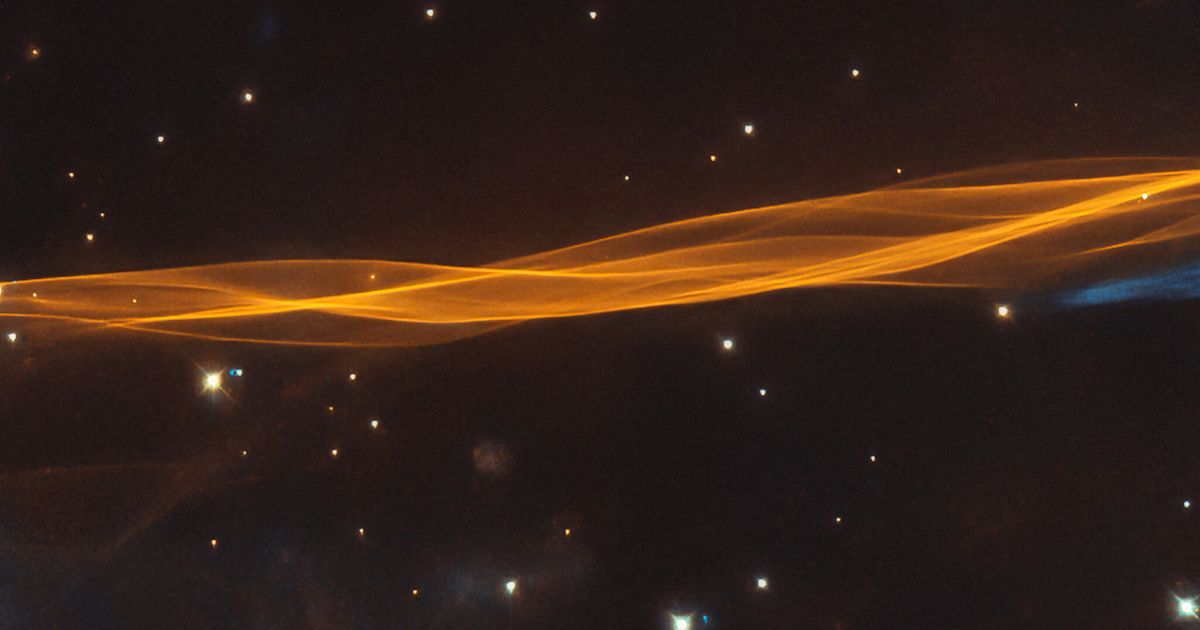
Space is pretty.
As the Hubble Space Telescope nears the end of its long-running mission, photo releases like this one are a constant reminder of how much we benefit from having an up-close view of deep space. The beautiful orange ribbon you see above is the remnant of a dead star that exploded in a supernova some 10,000 to 20,000 years ago.
From our perspective here on Earth, the exploded star once resided in the northern constellation of Cygnus, aka The Swan. The photo captures just a piece of the ribbon-like blast wave, situated around 2,400 light-years away.
NASA’s post notes that the full wave “covers an area 36 times larger than the full moon.” For context, Earth is about four times larger than the moon. So it’s a pretty big blast wave!
The star that exploded was much larger than our own sun, about 20 times the size. That’s one of the ways a supernova occurs: When a massive star expires – which is to say, at least five times larger than our sun – it triggers an explosion that sends stellar material hurtling outwards.
In the thousands of years since this particular star said goodbye, the blast wave it emitted has expanded out 60 light-years. The ribbon-like appearance, NASA’s post notes, is the result of “the interaction of the ejected material and the low-density interstellar material swept up by the shockwave.”
In simpler terms: The stuff released by the exploding star mixed with gases and dust that float through space to give us a gigantic, utterly gorgeous space ribbon.
